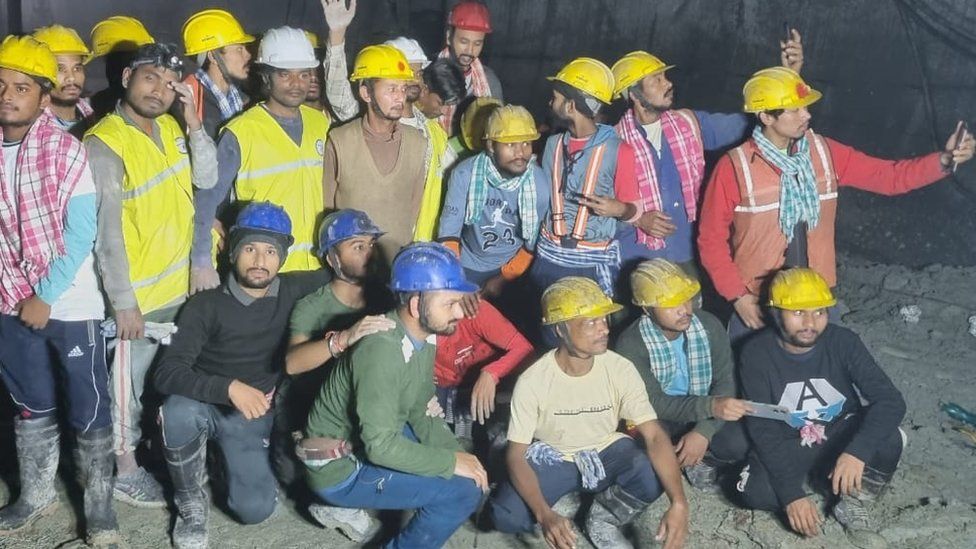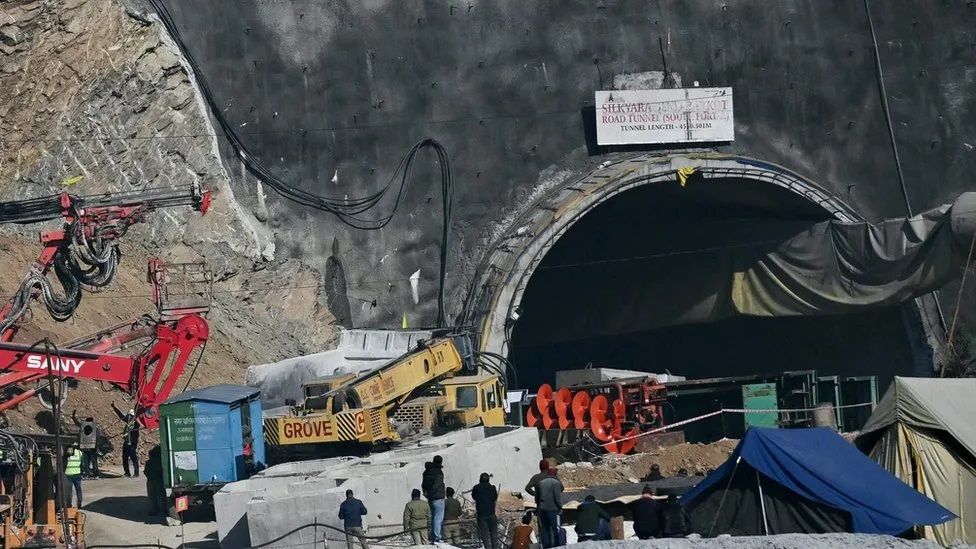Uttarakhand tunnel collapse: Rescued India workers tell of yoga and phone games
The 41 Indian workers rescued from a tunnel in Uttarakhand state after being trapped inside for 17 days are safe and recuperating in hospital.
In a video released to the media, they can be seen eating on their hospital beds and appear to be in good spirits.
The workers got trapped inside the tunnel on 12 November after a portion of it collapsed due to a landslide.
They were freed on Tuesday evening after a mammoth rescue operation that overcame many obstacles.
There was a sense of national relief after rescuers pulled out the last of the 41 men from the tunnel amid darkness.
They were wheeled out on stretchers through a 90cm (3ft) pipe that had been inserted through a wall of debris that was blocking them in.
This happy conclusion came after a day filled with anticipation, as authorities announced that there had been a breakthrough in the rescue operations.
Videos of the workers emerging from the tunnel capture them bounding out, smiling, waving and shaking hands with those present at the scene.
There was an air of jubilation among their colleagues and family members too, many of whom had spent days outside the tunnel, praying for the rescue operations to succeed.
They could be seen garlanding the workers, embracing them and giving them sweets.
Chaudhary Lal, who was photographed kissing his son Manjit – one of the trapped workers – told the BBC that he was happy and relieved to see his son.
“I have already lost one son to an accident at a construction site. I couldn’t stand to lose another,” he said.

Dhanpati, mother of Ram Sundar, told ANI news agency that Diwali was celebrated in their village on Tuesday after her son’s safe exit from the tunnel instead of on 12 November – the actual festival day.
Many family members of trapped workers have praised rescue officials and thanked them for bringing out their loved ones safely.
Meanwhile, the workers have also been speaking to the media about their experiences.
One of them shared with ANI a video he took of his colleagues at Chinyalisaur Community Health Centre, where they have been taken for medical check-ups.
The video captures the workers sitting on their beds and checking their mobile phones, eating, drinking tea and clicking selfies. Some can be seen brushing their teeth while others are standing around a water station and chatting.
Satya Dev, who was among the trapped men, told the Times of India newspaper that it was “claustrophobic” inside the tunnel and it was a relief to get out.
Another worker, Chamra Oraon, told the Indian Express newspaper that there were times when he felt restless inside the tunnel and wondered when he would be pulled out.

“But I never lost hope,” he said, adding that he spent time playing games on his mobile phone, which he would charge using portable chargers slipped in through a pipe by rescuers.
“We couldn’t call anyone since there was no network so we spoke among ourselves and got to know each other,” he told the newspaper.
Another worker, who spoke to Prime Minister Narendra Modi on a phone call, said that the workers would motivate each other to stay positive and that they would all eat their meals together.
“We would go for walks and practice yoga to keep active inside the tunnel,” he said.
Another worker described how initially they only switched on their phones to check the time to conserve batteries. But once they received chargers, they could use their phones more freely to keep themselves entertained.
A section of the 4.5km (3 miles) Silkyara tunnel caved in on 12 November. The tunnel is part of the government’s ambitious Char Dham project which aims to connect key Hindu pilgrim sites through two-lane paved roads in the Himalayan state.
Environmentalists and residents have blamed rapid construction, including the Char Dham project, for land subsidence in the region, saying this contributed to the tunnel collapse.



